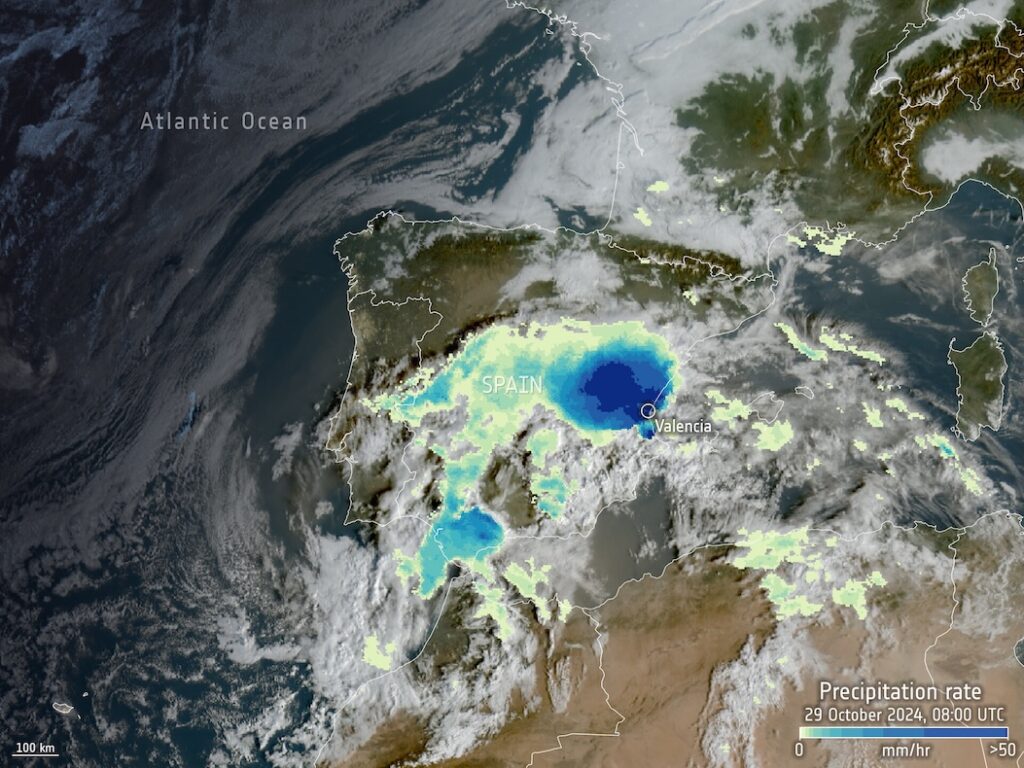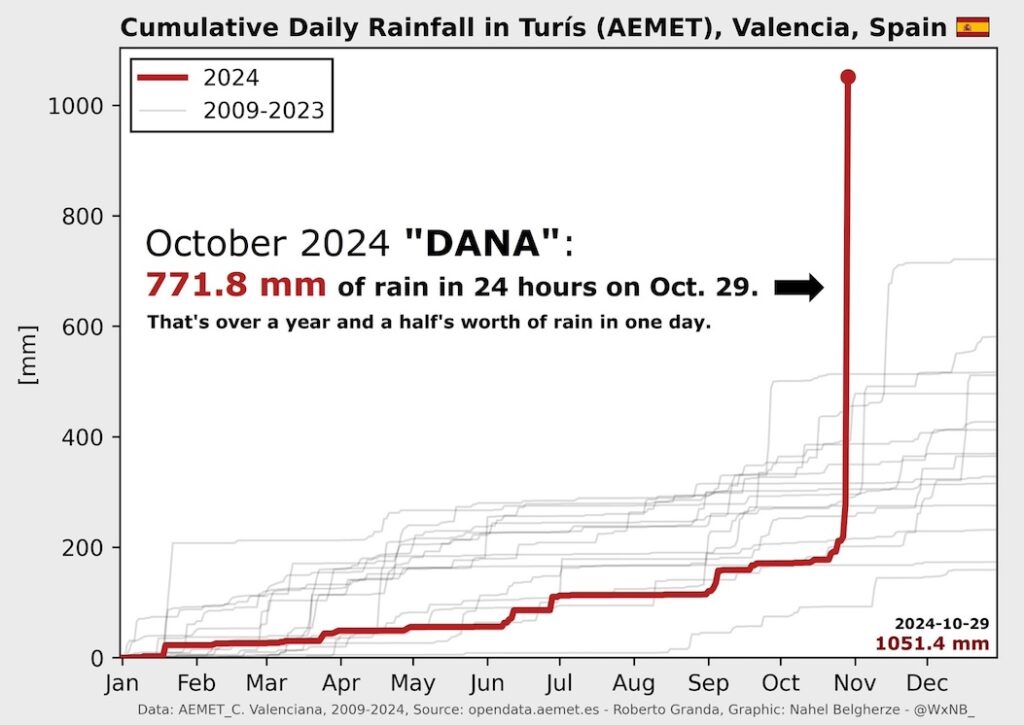It is hard to represent in words the sheer magnitude of the extreme rainfall event that brought devastating floods to southern and eastern Spain in late October 2024. The torrential rainfall of 29 October unleashed in particular on the region of Valencia was caused by a weather event known as a DANA (Depresión Aislada en Niveles Altos) or alternatively as a Gota Fría (Cold Drop). The broader meteorological term “cut-off low is also applied to such conditions. Areas of low pressure can become detached or cut off from the main atmospheric circulation of the jet stream.

The cut-off low system stalled over eastern Spain, allowing moisture-laden Mediterranean winds to fuel intense storms, which were further amplified by the region’s mountainous terrain and unusually warm sea temperatures.
The resulting torrential rainfall on 29 October primarily impacted the Magro, Turia, and Poyo river basins, leading to deadly flash floods that turned streets into raging torrents, destroying homes, bridges, and vehicles.
The Valencia region was particularly affected, with record-breaking rainfall—Chiva, 30km west of Valencia received 491mm in just 8 hours, while Turís Mas de Calabarra 25 km south west of the city recorded 771.8mm over 14 hours with a record-breaking 184.6mm falling in just 1 hour. Heavy rains later shifted north, paralyzing Barcelona with flooding that closed the airport, suspended train services, and shut down schools.

Weather forecasts did indicate a high-risk DANA event and rare red weather warnings for heavy rain were issued, but there were questions raised over the timing and effectiveness of the warnings, with many people caught out by the speed of the flash floods. Also there are concerns that urban development, such as homes built in dry riverbeds, ravines and other flood-prone areas, exacerbated the impact of the floods.
The floods stand as one of the most devastating natural disasters in the country’s recent history. The floods claimed over 220 lives, with many victims being elderly individuals who were unable to evacuate in time. Additionally, several people remained unaccounted for in the aftermath, with at least 40 of the deaths in the town of Paiporta, 15km from the centre of Valencia. More than 25,000 residents were displaced due to the destruction of homes and infrastructure. The death toll was the highest in a flood event in Europe since 1967.
230 kilometers of road and rail networks were damaged, including the high-speed rail line between Valencia and Madrid. Major highways such as the Autovía V-31 were severely affected, disrupting transportation and logistics. Metrovalencia services were suspended, particularly southern lines and commuter train services faced significant delays and cancellations. Over 100,000 vehicles were damaged or destroyed, with around 40,000 considered irreparable due to the extent of the damage.
The estimated economic impact exceeded €10 billion, affecting various sectors including agriculture, commerce, and industry. In total, it is believed that 48,000 companies were affected with a total of 116,000 insurance claims being made related to flood damage, amounting to a total value of at least €3.5 billion.
An estimated 50,000 hectares of agricultural land were affected, leading to significant losses in citrus fruits, rice, and other crops. In addition, floodwaters resulted in the death of numerous livestock, further impacting the agricultural sector.
The Spanish government allocated over €10.6 billion for relief efforts, including infrastructure repair, housing support, and assistance to farmers. An additional €3.76 billion was announced to further aid reconstruction.
In an analysis produced within days of the extreme weather event, World Weather Attribution concluded that over the past 75 years, daily rainfall extremes in the September-December season in central and southeastern Spain have increased significantly with global warming and are doubling in likelihood with an increased intensity of 12%.